
Related
The Israeli military is reportedly planning to ramp up its attacks on Lebanon by targetting more of the civilian infrastructure as well as symbols of the Lebanese government. One military official told the Israeli newspaper Ha’aretz “It could be that at the end of the story, Lebanon will be dark for a few years.” We speak to Catholic Relief Services representative Mark Shnellbaecher, who suggests that Lebanon could run out of fuel within the week, leading to a humanitarian catastrophe that will not be easily solved by ceasefire alone. [includes rush transcript]
Overall, the Israeli death toll has risen to about 75 people. The number of Lebanese deaths has reached 1,000 — more than 90 percent of them have been civilians. Over the weekend Israeli airstrikes continued to pelt Beirut’s southern suburbs, as well as Southern Lebanon. Airstrikes also destroyed at least four major bridges on aid routes leading north from Beirut. Dozens of Lebanese civilians were killed in the weekend’s attacks. A bomb Friday killed at least 33 Kurdish farm workers. We discuss the humanitarian situation on the ground and the long term effects of war with Mark Shnellbaecher, regional director of Catholic Relief Services in Beirut.
- Mark Shnellbaecher. Regional director of Catholic Relief Services for the Middle East. He is based in Beirut.
Transcript
AMY GOODMAN: Overall, the Israeli death toll has risen to 75 people. The number of Lebanese deaths has reached 1,000, more than 90% of them have been civilian. Over the weekend, Israeli air strikes continue to pelt Beirut’s southern suburbs, as well as Southern Lebanon. Air strikes also destroyed at least four major bridges on aid routes leading north from Beirut. Dozens of Lebanese civilians were killed in the weekend’s attacks. A bomb Friday killed at least 33 Kurdish farm workers. Last night, we spoke to Mark Shnellbaecher. He’s the regional director of Catholic Relief Services in Beirut.
MARK SHNELLBAECHER: It’s a compound of problems we’re facing because of the continuing bombing of the road and bridge infrastructure. Our latest problem is that fuel is running short throughout the country for both the power plants and the generators, particularly in hospitals and also at fuel stations, at the gas stations. So, we’re now facing a situation that even those roads that we still can travel, both to bring stuff in, mainly from Syria, and then to get it out of warehouses in Beirut into towns and villages that they’re hosting displaced people, we now face the problem of in probably, I don’t know, I would guess four, five, six days, there’s not going to be any fuel left to run this stuff around.
AMY GOODMAN: What bridges have been bombed? What kind of impact does that have — the Israeli government saying they’re bombing it so that Hezbollah can’t get weapons from Syria?
MARK SHNELLBAECHER: I don’t have any doubt about that claim, that the purpose of bombing these bridges by the IDF is to hinder Hezbollah’s ability to transport weaponry closer to the Israeli border so that they can fire on Israel. However, it’s not only the only things going down those roads — what’s going down those roads is not only Hezbollah material. It’s also people. It’s also Lebanese trying to get out of harm’s way. It’s also aid workers trying to get into the country. It’s also food coming into the commercial supply line into the supermarkets. And it’s also aid — aid supplies that are coming in from Syria. And they’ve systematically been taking out bridges and roads throughout the country and are effectively strangling the country.
I can’t tell you how many bridges have been taken out. I don’t know. I know that two were taken out two days ago on the northern coastal highway between Tripoli and Beirut, which was until that point the major highway that was bringing aid into the country from Syria.
Most of our program right now, simply because of access issues, is assisting displaced families who are living either with host families or in schools or mosques and churches and convents and other sorts of public buildings. We are every day attempting to get convoys into the south, as are the UN and the Red Cross, and whatnot. But this is an extremely risky and tenuous operation due to the continuing military activity down there. You send stuff down, you never know whether it’s going to get to the destination you’re hoping to send it to, and just because of the inability or the unwillingness of Israelis to guarantee safe passage.
I was at a meeting this evening with UN officials, and they estimate that there’s only 20,000 to 30,000 people left in the south. And so, this is probably out of a population or more than three-quarters of a million people. 20,000-30,000 people left, completely besieged, unable to be reached. First they moved to Tyre, and Tyre continues to be bombed, so they moved to Saida. Yesterday Saida was threatened to be — was leafleted by the IDF, warning that that city was going to be bombed, so now people are on the move up to Beirut. Some of them are too poor to leave. There’s no question about that. I suppose some of them just refuse to leave their land. I suppose some, it’s just out of plain old stubbornness. It’s a devil’s choice, staying your ground when Israel has told you to leave or get on the road and — you’re going to be bombed in your town or risk being bombed on the road as you’re fleeing north. And this happens in a number of times.
So what’s happening here is, in addition to all the death and injuries that this conflict is causing, as well as the destruction of Lebanon’s infrastructure, systematic destruction of Lebanon’s infrastructure, what the Israelis are doing by forcing people from their homes, they’re stirring the pot of the very delicate balance of the sectarian demographics in the country. It’s essentially, people who are being driven by their homes are for the most part Shiites. And they are now going — when they go to places like Saida, for example, they’re going into a predominately Sunni city. And then when they move north into Mount Lebanon or Zahleh, they’re moving — and even further up the coast, they’re moving into areas that are predominantly inhabited by Christians. Or when they go to places like Aleh, they’re going into Druze areas. And so, thus far, there has been remarkably little inter-communal conflict and indeed a heck of a lot of inter-communal solidarity by people opening their homes to people they don’t even know from the south. Who knows how long is this going to last?
Of the about 700,000–750,000 Lebanese displaced who are still inside the country, more than 500,000 of those people are with host families. Now, in some cases, of course, that’s their relatives or friends. But in many cases, it’s people they don’t know, who have opened their homes to them. That’s been the case for three weeks. And I suppose most families can sustain house guests for three weeks. And how long can that continue? Can it continue for two months? Not that I think the conflict is going to — the act of conflict is going to continue for two months, but it’s not as if people are going to be able to go home the day a ceasefire is declared.
Go home to what? Rubble? No schools? No civil infrastructure? No electricity, no water, no sewage? No jobs? They’re going to stay with whom — they’re going to hope to stay with whom they’re currently living. And, as I said, in many cases, these are — the numbers of people that have moved are significantly increasing the populations of these other areas, and in many cases they’re altering the demographics that carry balance. In addition to all of the damage and death that the IDF attacks on Lebanon are causing, it’s stirring the pot of the very fragile demographic balance inside the country, with what I fear to be will be potentially very dangerous effects once a ceasefire takes hold.
AMY GOODMAN: What is your estimate of the number of Lebanese casualties?
MARK SHNELLBAECHER: It’s a hard number. I mean, the numbers that we’re seeing is approaching 1,000 dead, approaching more than 3,500 injured. However, there’s still a lot of buildings that are rubble. I mean, today, I was at my office, which is in Christian East Beirut, maybe two kilometers from the southern suburbs. And, you know, we were watching the bombings late this afternoon. So more buildings are coming down. These are densely, densely populated areas. Everybody lives in an apartment building. And so, it’s really anybody’s guess as to how many bodies are still left in the rubble.
AMY GOODMAN: Mark Shnellbaecher, regional director of Catholic Relief Services in Beirut.

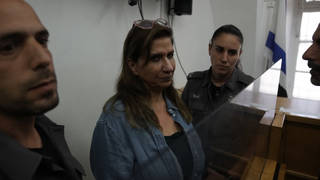
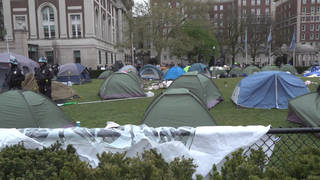
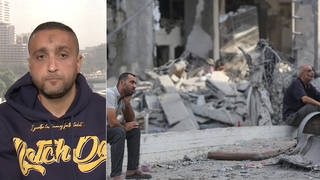
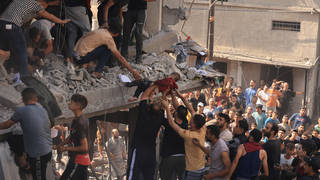





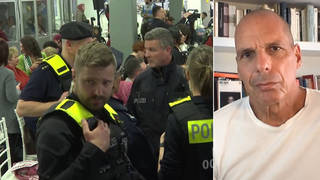

Media Options